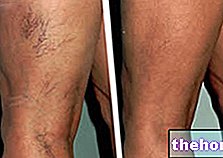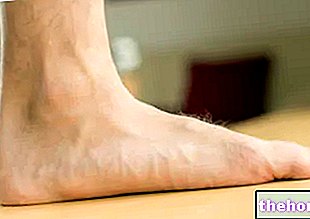Generality
Spasticity is a disorder consisting in the excessive and abnormal increase in muscle tone. More precisely, spasticity is characterized by spasms of one or more skeletal muscles and by an increase in the tone of the stretching reflexes.

Spasticity is a highly debilitating condition, the consequences of which can be serious; hence the importance of identifying the treatment that best suits the characteristics of each patient, in such a way as to improve, as far as possible, the quality of life.
Causes
Spasticity is a clinical sign resulting from serious underlying conditions and / or pathologies. Among the main causes that can cause the onset of this disorder, we remember:
- Multiple sclerosis;
- Cerebral palsy;
- Spinal cord injuries;
- Brain stroke.
Symptoms and Consequences
As mentioned, spasticity is usually itself the symptom of an underlying pathological condition. However, this disorder is frequently associated with other symptoms, such as painful spasms and muscle weakness.
In patients suffering from spasticity, slight impairments of motility can occur, up to the complete loss of skeletal muscle control. In the latter case, we can speak of:
- Monoparesis, when the motor deficit affects only one limb;
- Paraparesis, if the motor deficit affects both lower limbs;
- Tetraparesis, when the motor deficit affects all four limbs and, in some cases, also the muscles of the trunk and neck;
- Hemiparesis, when the motor deficit affects only one side of the body.
Finally, spasticity can lead to serious consequences, such as: balance disorders, ataxia, dysarthria, difficulty in swallowing, tendon shortening, muscle retraction and deformation of the joints.
Diagnosis
The diagnosis of spasticity must be made by the doctor, who will proceed by evaluating the resistance that the skeletal muscles oppose to passive movements.
Usually, the evaluation of this resistance is carried out using an instrument called the "Ashworth scale" which - assigning a number between 0 and 4 - classifies the anomalies of skeletal muscle tone as follows:
- 0: absence of modification of muscle tone during mobilization;
- 1: moderate increase in muscle tone with "step sensation" when the limb is flexed or extended;
- 2: evident increase in muscle tone, in which however mobilization is still possible;
- 3: considerable increase in muscle tone, in which mobilization is difficult;
- 4: fixed contracture in extension or flexion.
Treatment
As we have seen, spasticity is a disorder that can negatively affect the quality of life of patients who suffer from it; for this reason its treatment is fundamental.
Generally, several therapeutic strategies are used simultaneously. More specifically, a basic drug therapy is flanked by various physiotherapy treatments, aimed at strengthening healthy muscles and mobilizing, as far as possible, those affected by spasticity.
Pharmacological treatment, on the other hand, is symptomatic and serves above all to relieve the patient from pain, which is often associated with spasticity, and to facilitate the performance of physiotherapy.
Among the main antispasmodic drugs of skeletal muscles currently used in therapy, we remember:
- Diazepam (Valium® solution for injection), a benzodiazepine which is used in the treatment of various disorders, but which is also used to treat spasticity due to spinal cord injury, or caused by cerebral palsy. However - at the doses that need to be given to significantly reduce skeletal muscle tone - diazepam causes side effects, such as sleepiness and fatigue, in most patients.
- Baclofen (Lioresal®), this active ingredient is used in the treatment of spasticity caused by multiple sclerosis and traumatic injuries of the spinal cord, and is mainly used in cases of paraparesis and tetraparesis.
The peculiarity of baclofen is that it can be administered both orally and intrathecally. In the latter case, a subcutaneous infusion pump and a catheter will be surgically implanted which will arrive at the intrathecal level, where the drug will be released at the predetermined intervals.
The advantage of this latter mechanism of administration of baclofen consists in a reduction of the side effects that occur when the drug is administered orally. These undesirable effects are: sedation, psychological disturbances, dizziness and marked weakness. - Tizanidine (Sirdalud®), this active ingredient is a muscle relaxant drug widely used for the treatment of spasticity associated with multiple sclerosis, but not only. In fact, tizanidine is also used in the treatment of spasticity due to injuries or pathologies of the spinal cord, or due to cerebral stroke.
Tizanidine is administered orally and the main side effects that may occur following its intake are: sedation, muscle weakness, dizziness, hypotension and bradycardia.




























